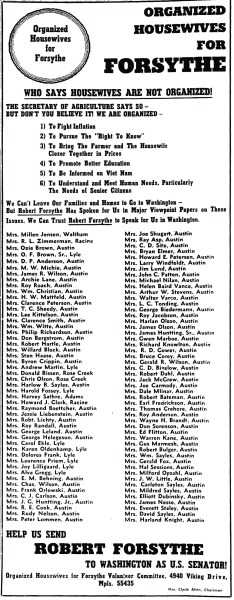 When I first heard about HGTV’s Cash and Cari, I got a little excited thinking this show might focus more on decorative collectibles, plus offer a splash of do-it-yourself (DIY) home decor creativity. While the show has all that potential, I really was disappointed.
When I first heard about HGTV’s Cash and Cari, I got a little excited thinking this show might focus more on decorative collectibles, plus offer a splash of do-it-yourself (DIY) home decor creativity. While the show has all that potential, I really was disappointed.
Cash and Cari (Cari is not pronounced like “carry,” but like “car” with an “e” on the end, so it’s not quite the pun your eyes expect) follows the work of “estate sale guru” Cari Cucksey of Michigan’s RePurpose Estate Services.
If you like watching how to set up an estate or rummage sale, then maybe you’ll like this. However, for me, the show lost points when it dropped a standard part of the collectible shows format: the visit with the expert or in depth look at a few items. I realize this part of the show’s time was given to the DIY component — and that was something I was looking forward to; but in this particular episode this segment infuriated me.
In this debut episode, Cari purchases an older used bench for $40 and has a staff member give it “an impressive makeover.” The makeover consisted of repainting the bench, removing the older upholstered seat, and replacing it with new fabric — sewing a decorative throw pillow to match. However, the new “upholstery” job was terrible.
The fabric was staple-gunned in place and the staples hidden from view by hot-glue-gunning some sort of open-weave rick-rack lace over it. Use of a glue gun on the seat of a bench in place is anything but quality. (The dried glue will be lumpy, visible, and likely to peel away if the object has any use whatsoever ; it’s not appropriate for furniture or seating or anything besides the purely decorative.) Anything but quality and certainly not worth, in my opinion, the $300 they proposed to sell it for. Normally I don’t like to argue the price someone gets for something; different location alone can create marked price differentials. But this bench was really a shoddy DIY job and not fit for an audience of antiques and vintage collectibles fans.
Collectors of antiques are looking for quality.
Plus, the item was to be sold at “the shop,” and it kind of makes you wonder how the bench will be presented there… As an antique or vintage piece, or as a quickly made home decor piece? It’s the sort of thing an experienced collector wouldn’t be fooled by, but it’s also the sort of thing, like reproductions offered for sale, that most collectors want to know are properly represented so that no one feels tricked. No mention of this — after such a cheap makeover, weakens Cari’s credibility.
Yes, I watch a lott of the collectibles shows, and I did consider how potential “burn out” might be coloring my thoughts about Cash and Cari; but I don’t think that’s it (see my post about Oddities).
Where Cash and Cari suffers is a lack of focus on what makes the other shows great (personalities and drama of “cast,” information segments, &/or presentation of values of items) and a complete fumbling of the potentially fabulous DIY segment.
In trying to be kind, I wished HGTV had, as many of the other networks have, given us more than one episode to watch so that I could see if another episode could make me a fan… But then I realized HGTV thought this episode was strong enough to be the series lean-in and if that was their best foot forward, I don’t think I’ll watch another episode.

















































































